Google Pixel 8a review - The small Google smartphone is unique within the mid-range segment
The a-series from Google stands for premium features paired with an attractive price—and the same can be said for the Pixel 8a. However, the mid-range phone can no longer really be classed as inexpensive due to its MRSP of US$499 for the 128 GB version. Even so, the Pixel 8a is very sustainable thanks to its seven years of operating system updates—plus, its in-house flagship SoC, the Tensor G3, should make it well prepared for the coming years.
Google's mid-range smartphones continue to have a focus on photography. Although the Pixel 8a has the same camera hardware as the Pixel 7a, improvements include its countless AI camera features. In this review, we will see how much the phone differs to the Pixel 8 series.
Are you a techie who knows how to write? Then join our Team! Wanted:
- News Writer
Details here
Possible competitors compared
Version | Rating | Date | Model | Weight | Drive | Size | Resolution | Best Price |
|---|---|---|---|---|---|---|---|---|
| v8 (new) | 83.1 % | 07/2024 | Google Pixel 8a Tensor G3, Mali-G715 MP7 | 188 g | 128 GB UFS 3.1 Flash | 6.10" | 2400x1080 | |
| v7 (old) | 87.4 % | 05/2024 | Samsung Galaxy A55 5G Exynos 1480, Xclipse 530 | 213 g | 256 GB UFS 3.1 Flash | 6.60" | 2340x1080 | |
| v7 (old) | 87.4 % | 03/2024 | Xiaomi Redmi Note 13 Pro+ 5G Dimensity 7200, Mali-G610 MP4 | 204.5 g | 512 GB UFS 3.1 Flash | 6.67" | 2712x1220 | |
| v7 (old) | 83.1 % | 09/2023 | Sony Xperia 10 V SD 695 5G, Adreno 619 | 159 g | 128 GB UFS 2.2 Flash | 6.10" | 2520x1080 | |
| v7 (old) | 86.1 % | 03/2024 | Xiaomi Poco X6 Pro 5G Dimensity 8300-Ultra, Mali-G615 MP6 | 186 g | 512 GB UFS 4.0 Flash | 6.67" | 2712x1220 | |
| v7 (old) | 87.1 % | 06/2023 | Google Pixel 7a Tensor G2, Mali-G710 MP7 | 193.5 g | 128 GB UFS 3.1 Flash | 6.10" | 2400x1080 |
Please note: We have updated our rating system and the results of version 8 are not comparable with the results of version 7. More information is available here.
Case - The Google Pixel 8a with Gorilla Glass
Quite a lot has changed about the design of this year's a-series—the Pixel 8a is now a lot more rounded and not as angular. The bezels around the 6.1-inch OLED panel have also been slimmed down ever so slightly compared to the Pixel 7a. As a result, its display-to-size ratio of 81.6 per cent is a little better. Even so, the wide black frame around the OLED panel unfortunately still screams "mid-range". The display is still only protected from scratches by Gorilla Glass 3 and not by the more up-to-date Victus which its sister model—the Pixel 8—is fitted with.
Color selection of the Google Pixel 8a
The Pixel 8a is available in a wide range of colors—but only the version with 128 GB of internal storage. The version with 256 GB of storage is just available in black, which doesn't really make much sense and is surely a negative point to note. The back is made from plastic, but it doesn't feel cheap. Visually, the material looks similar to glass, although glass does feel a lot more high-quality to the touch. Its surface is slightly frosted, so it isn't terribly sensitive to collecting fingerprint marks.
The Pixel smartphone's case is dustproof and protected against temporary immersion into fresh water according to IP67—plus, it is made from up to 100 per cent recycled materials (aluminum components). The plastic back is only made from 76 per cent recycled materials. The Pixel 8a's build quality is fine and there are no gaps, with the exception of the area in between the camera model and the back of the device.
Connectivity - The Google smartphone with USB 3.2
With the help of Bluetooth 5.3, dual SIM, Miracast, stereo speakers and NFC for contactless payments, the Pixel 8a offers a good range of features for a mid-range device. Especially as its USB-C port features the 3.2 specification. However, during our copying test using a connected M2.SSD hard drive (Samsung 980 Pro), the USB port's transfer speeds were only 74 MB/s, which is barely faster than a USB 2.0 smartphone. At least Google has now enabled wired image output via the port. The connected storage media can be formatted with FAT, FAT32 or exFAT. However, the Google phone does not support NTFS.
Our test sample has 128 GB of UFS 3.1 storage, but its actual available storage space is only 110 GB due to the operating system and some pre-installed apps. If you need more space, you can transfer files to an external storage medium (such as USB sticks) using USB-OTG; it is not possible to expand the phone's storage with a microSD card.
Software - The Google Pixel 8a with long update delivery
One of the arguments that speaks for purchasing the mid-range Pixel 8a is its extremely long software support. Google will give its smartphone seven years of security patches and Android updates (the same as on the Pixel 8 series), meaning it will still be given security patches in the year 2031 (Android 21). Only Samsung is similarly sustainable within the mid-range segment when it comes to software maintenance, giving its phones five years of security patches.
At the time of testing, the Pixel 8a used the current Android version 14 with its latest security patches being from June 2024. According to the manufacturer, the latter will be updated monthly.
Communication and GNSS - The Google phone with 5G
Although the installed Tensor G3 theoretically allows access to the WiFi 7 network, the Pixel 8a actually only supports WiFi 6E. Even so, high speeds should also be possible via the 6 GHz range—using our reference router (Asus ROG Rapture GT-AXE11000), we measured transfer rates of over 800 MBit/s on average (5 GHz) during the test. Interestingly, the Google phone works slower and more inconsistently in the 6 GHz channel, with sharp drops below 500 MBit/s.
For connecting to the web on the go, you can make use of the 5G standard including a wide variety of supported frequencies, but this doesn't include mmWave support. Its available 4G frequencies are also plentiful for a mid-range phone—all the relevant LTE bands were supported in the area in which this test was carried out (Germany).
Please note: We have received information that the Pixel 8a's actual 5G support may differ from its datasheet in some cases. Although the Google smartphone supports a wide range of 5G bands according to its specifications, Google appears to be restricting this in some countries. Latin America and Asia, but also Europe (UK) seem to be affected. This should be taken into account before travelling abroad.
| Networking | |
| Google Pixel 8a | |
| iperf3 receive AXE11000 |
|
| iperf3 transmit AXE11000 |
|
| iperf3 transmit AXE11000 6GHz |
|
| iperf3 receive AXE11000 6GHz |
|
| Samsung Galaxy A55 5G | |
| iperf3 receive AXE11000 |
|
| iperf3 transmit AXE11000 |
|
| Xiaomi Redmi Note 13 Pro+ 5G | |
| iperf3 receive AXE11000 |
|
| iperf3 transmit AXE11000 |
|
| Sony Xperia 10 V | |
| iperf3 receive AXE11000 |
|
| iperf3 transmit AXE11000 |
|
| Xiaomi Poco X6 Pro 5G | |
| iperf3 receive AXE11000 |
|
| iperf3 transmit AXE11000 |
|
| Google Pixel 7a | |
| iperf3 receive AXE11000 |
|
| iperf3 transmit AXE11000 |
|
| iperf3 transmit AXE11000 6GHz |
|
| iperf3 receive AXE11000 6GHz |
|
| Average of class Smartphone | |
| iperf3 receive AXE11000 |
|
| iperf3 transmit AXE11000 |
|
| iperf3 transmit AXE11000 6GHz |
|
| iperf3 receive AXE11000 6GHz |
|
During our practical test, the Pixel 8a determined our location very well. Apart from a few small deviations, it recorded our route super accurately. At times, the comparison device (Garmin Venu 2) even showed more inaccuracies. The Google phone can access all the main satellite systems in single-band mode. In our test, we were able to connect to the Beidou (B1, GPS- (L1), Galileo (E1) and GLONASS (L1) systems.
Telephone features and call quality - The Pixel phone with dual SIM support
The Pixel 8a has a dual SIM function—but only if you make use of an eSIM, as there is just one nano-SIM card slot installed into the device itself. Calls can be made via the Wi-Fi (VoWiFi) or LTE network (VoLTE).
Compared to the Pixel 8, the a-model only has two microphones, but these ensure that voices are transmitted well. Minor background noise is effectively filtered out. With the "call filter" function, incoming calls can also be accepted directly by the Google Assistant to detect spam calls in advance.
Cameras - The Google Pixel 8a with a dual cam
Although nothing has changed technically in the Pixel 8a's front-facing camera compared to its predecessor, it now supports UHD video recording. When it comes to picture quality, the selfie camera with a resolution of 13 MPix boasts a good level of sharpness and strong HDR capabilities. However, the Pixel 8a exaggerates contrasts a little.
A main camera with OIS gets to work on the back—its sensor is from Sony (IMX787), just like the Pixel 7a. With a sensor size of 1/1.73 inches and a resolution of 64 MPix, the pixels are quite small at 0.8 micrometers, but 2.4-micrometer virtual pixels are calculated as standard thanks to pixel binning technology.
Photos taken on this phone have a nice dynamic range and natural color balance, although the Pixel 8 Pro is a good deal sharper in direct comparison. In low-light conditions, the contours in the subjects are also softer using the Pixel 8a compared to the Pro model, but its sharpness and illumination are impressive for this price range.
Its rear camera setup is completed by a 13 MPix lens for ultra-wide-angle shots. Interestingly, it uses the same sensor (Sony IMX712) as on the front. The photos' sharpness is okay, but the edges of the image become slightly noisy and blurred even in daylight. Major qualitative differences become noticeable at high zoom levels, which can only be done digitally with the Pixel 8a. After sensor cropping (2x), there is hardly any quality worth mentioning.
What the Pixel 8a lacks in new camera hardware compared to its predecessor, AI features (as already known from the Pixel 8 phones) should make up for. For example, Google optimizes group photos by combining faces from several photos to ensure that no person has their eyes closed. An audio eraser is also on board to remove distracting noise from video recordings.
Image Comparison
Choose a scene and navigate within the first image. One click changes the position on touchscreens. One click on the zoomed-in image opens the original in a new window. The first image shows the scaled photograph of the test device.
Wide-angleWide-angleLow LightUltra-wide angleZoom 5xIn controlled lighting conditions, the mid-range Google phone showed decent color reproduction during our measurement. However, blue tones in particular were not depicted very accurately. All-in-all, its DeltaE deviations of around 7.1 were fine. Details in our test chart looked sufficiently sharp and color gradients were displayed very cleanly.
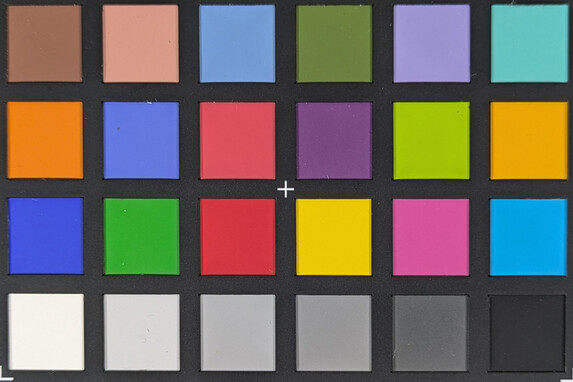
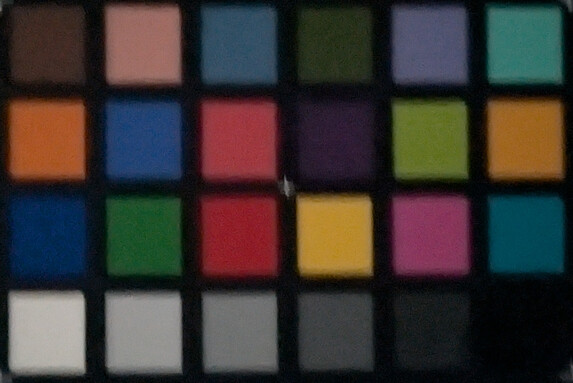
Accessories and warranty - The Google smartphone without a power supply
The Pixel 8a comes with a very slimmed-down scope of delivery. There is nothing more than a USB cable and OTG adapter in its box, alongside the obligatory information materials and a SIM tool. However, there are plenty of accessories to choose from in the manufacturer's online store. In addition to a 30-watt power adapter, a wide range of optional covers are also on offer.
The Google phone's warranty depends on where you purchased the device. More information can be found on the manufacturer's website. Google doesn't offer an optional insurance package or extended warranty for the Pixel 8a.
Input devices & operation - The Google Pixel 8a with Face Unlock
The installed AMOLED panel with a refresh rate of 120 Hz makes animations and scrolling on websites look nice and smooth. In addition, inputs on the 6.1-inch display are implemented quickly and accurately right up to the corners of the touchscreen. The manufacturer hasn't pre-installed a screen protector.
Biometric security is provided by an optical fingerprint sensor inside the Pixel 8a's screen. The sensor responds super fast and its recognition rates are excellent. You can also unlock the screen quickly in good lighting conditions using facial recognition via the front-facing camera, but this 2D method is not as reliable.
The Pixel phone's linear vibration motor (z-axis) can be adjusted in the settings and is precise and easily perceptible. This makes typing on the Pixel 8a feel very pleasant.
Display - The Google phone with OLED
The 6.1-inch Actua display fitted into the Pixel 8a has a high pixel density of 430 ppi thanks to its 1080p resolution. By default, the panel operates at a frequency of just 60 Hz. Alternatively, the refresh rate can be adjusted to 120 Hz using the so-called "Smooth Mode".
Compared to its predecessor, Google has improved a lot when it comes to display brightness. We measured impressive maximum rates of 1,556 cd/m² when depicting a pure white screen with the ambient light sensor active—and the screen became even brighter with an even distribution of light and dark areas (APL18). In our test, we measured 2,136 cd/m². Its advertised peak brightness of 2,000 nits was even exceeded when playing back our 4K video—we noted 2,237 cd/m². This makes the Pixel 8a ideally suited for playing HDR content. HLG, HDR10+ and HDR10 are supported as standards.
| |||||||||||||||||||||||||
Brightness Distribution: 88 %
Center on Battery: 1518 cd/m²
Contrast: ∞:1 (Black: 0 cd/m²)
ΔE Color 1.2 | 0.5-29.43 Ø4.98
ΔE Greyscale 2 | 0.57-98 Ø5.2
99.1% sRGB (Calman 2D)
Gamma: 2.2
| Google Pixel 8a AMOLED, 2400x1080, 6.10 | Samsung Galaxy A55 5G Super AMOLED, 2340x1080, 6.60 | Xiaomi Redmi Note 13 Pro+ 5G AMOLED, 2712x1220, 6.67 | Sony Xperia 10 V OLED, 2520x1080, 6.10 | Xiaomi Poco X6 Pro 5G AMOLED, 2712x1220, 6.67 | Google Pixel 7a OLED, 2400x1080, 6.10 | |
|---|---|---|---|---|---|---|
| Screen | -8% | 8% | 0% | 5% | 0% | |
| Brightness middle | 1518 | 962 -37% | 1240 -18% | 933 -39% | 1034 -32% | 1006 -34% |
| Brightness | 1466 | 967 -34% | 1233 -16% | 944 -36% | 1035 -29% | 1010 -31% |
| Brightness Distribution | 88 | 99 13% | 98 11% | 97 10% | 96 9% | 95 8% |
| Black Level * | ||||||
| Colorchecker dE 2000 * | 1.2 | 1.6 -33% | 1.1 8% | 1.1 8% | 1.1 8% | 1.1 8% |
| Colorchecker dE 2000 max. * | 3.3 | 2.6 21% | 2.2 33% | 1.7 48% | 1.9 42% | 2.5 24% |
| Greyscale dE 2000 * | 2 | 1.5 25% | 1.4 30% | 1.8 10% | 1.4 30% | 1.5 25% |
| Gamma | 2.2 100% | 2.13 103% | 2.21 100% | 2.29 96% | 2.22 99% | 2.25 98% |
| CCT | 6786 96% | 6382 102% | 6669 97% | 6611 98% | 6674 97% | 6531 100% |
* ... smaller is better
As is typical for displays with organic light-emitting diodes, the Pixel 8a also uses PWM technology to control its brightness. Similar to the Pixel 8, the a-model's flickering isn't very high-frequency, meaning it is less friendly on the eyes. We used an oscilloscope to measure a constant 120 Hz with a stable amplitude curve at minimum display brightness. The value doubled to 240 Hz from about half of the phone's maximum brightness.
Still, the amplitude deflection is relatively flat at 26 per cent. The greater this value deviates from 0 per cent, the higher the probability that changes in brightness will have a negative impact.
Screen Flickering / PWM (Pulse-Width Modulation)
| Screen flickering / PWM detected | 120 Hz Amplitude: 26.3 % | ||
The display backlight flickers at 120 Hz (worst case, e.g., utilizing PWM) . The frequency of 120 Hz is very low, so the flickering may cause eyestrain and headaches after extended use. In comparison: 53 % of all tested devices do not use PWM to dim the display. If PWM was detected, an average of 17629 (minimum: 5 - maximum: 3846000) Hz was measured. | |||
Measurement series with fixed zoom level and different brightness settings (The amplitude curve at minimum brightness looks flat, but this is due to the scaling. The info box shows the enlarged version of the amplitude at minimum brightness).
The mid-range phone only has two color modes. If you want colors and gray tones to be displayed the most accurately, you'll have to select the "Natural" profile. Unfortunately, the Pixel 8a does not support color temperature adjustment.
We examined the AMOLED panel's color reproduction with the Calman analysis software and a photo spectrometer. We obtained very small deviations in our measurements and the DeltaE values we noted are clearly within the target range (<3).
Display Response Times
| ↔ Response Time Black to White | ||
|---|---|---|
| 1.05 ms ... rise ↗ and fall ↘ combined | ↗ 0.4965 ms rise | |
| ↘ 0.5575 ms fall | ||
| The screen shows very fast response rates in our tests and should be very well suited for fast-paced gaming. In comparison, all tested devices range from 0.1 (minimum) to 240 (maximum) ms. » 2 % of all devices are better. This means that the measured response time is better than the average of all tested devices (21.3 ms). | ||
| ↔ Response Time 50% Grey to 80% Grey | ||
| 2.83 ms ... rise ↗ and fall ↘ combined | ↗ 1.338 ms rise | |
| ↘ 1.494 ms fall | ||
| The screen shows very fast response rates in our tests and should be very well suited for fast-paced gaming. In comparison, all tested devices range from 0.2 (minimum) to 636 (maximum) ms. » 8 % of all devices are better. This means that the measured response time is better than the average of all tested devices (33.5 ms). | ||
The Google phone does really well outdoors and has enough brightness reserves to cope with summer lighting situations. However, if you adjust its brightness manually, you'll only have a maximum of 777 cd/m² at your disposal, which means that reflections on the Gorilla Glass 3 surface may interfere with readability in midsummer conditions.
The Pixel 8a's viewing angle stability is impressive, with a slight loss of brightness only becoming visible at very flat viewing angles.
Performance - The Google Pixel 8a with a Tensor SoC
The Pixel 8a uses Google's latest flagship chipset, the Tensor G3, and has access to 8 GB of LPDDR5 RAM. Although the in-house processor isn't quite on par with a Snapdragon 8 Gen 3, this isn't a major issue for a mid-range device. The Pixel 8a can certainly keep up with the best of the best in this respect.
In our benchmark package, the Google phone—together with the Poco X6 Pro 5G and its MediaTek Dimensity 8300 Ultra—came ahead of the mid-range competition. During Geekbench, the Pixel 8a showed particularly good single-core performance, while its multi-core performance was slightly worse than that of the Xiaomi phone. However, the Tensor G3 was a little weaker in the system benchmarks.
| UL Procyon AI Inference for Android - Overall Score NNAPI | |
| Xiaomi Poco X6 Pro 5G | |
| Google Pixel 7a | |
| Google Pixel 8a | |
| Xiaomi Redmi Note 13 Pro+ 5G | |
| Average Google Tensor G3 (25563 - 29654, n=3) | |
| Average of class Smartphone (207 - 84787, n=143, last 2 years) | |
| Sony Xperia 10 V | |
| Samsung Galaxy A55 5G | |
| Geekbench ML | |
| 0.6 TensorFlow Lite CPU | |
| Google Pixel 8a | |
| Average Google Tensor G3 () | |
| Average of class Smartphone (381 - 1342, n=15, last 2 years) | |
| 0.6 TensorFlow Lite GPU | |
| Average of class Smartphone (123 - 1478, n=15, last 2 years) | |
| Google Pixel 8a | |
| Average Google Tensor G3 () | |
| 0.6 TensorFlow Lite NNAPI | |
| Google Pixel 8a | |
| Average Google Tensor G3 () | |
| Average of class Smartphone (263 - 3410, n=13, last 2 years) | |
When it comes to graphics calculations, the Pixel 8a with its Mali-G715 MP7 achieved very competitive results in our test and, as a result, is clearly better than the Pixel 7a. Together with the Mali-G615 MP6 inside the Poco X6 Pro 5G, the Google phone led our comparison field, although its deficit in the demanding 3DMark tier tests was alarming. It seems that a thermal reduction in the Pixel 8a's performance already plays a big role in this aspect.
GFXBench (DX / GLBenchmark) 2.7: T-Rex Onscreen | 1920x1080 T-Rex Offscreen
GFXBench 3.0: on screen Manhattan Onscreen OGL | 1920x1080 1080p Manhattan Offscreen
GFXBench 3.1: on screen Manhattan ES 3.1 Onscreen | 1920x1080 Manhattan ES 3.1 Offscreen
GFXBench: on screen Car Chase Onscreen | 1920x1080 Car Chase Offscreen | on screen Aztec Ruins High Tier Onscreen | 2560x1440 Aztec Ruins High Tier Offscreen | on screen Aztec Ruins Normal Tier Onscreen | 1920x1080 Aztec Ruins Normal Tier Offscreen | 3840x2160 4K Aztec Ruins High Tier Offscreen
| 3DMark / Wild Life Extreme Unlimited | |
| Xiaomi Poco X6 Pro 5G | |
| Google Pixel 8a | |
| Google Pixel 7a | |
| Xiaomi Redmi Note 13 Pro+ 5G | |
| Samsung Galaxy A55 5G | |
| Sony Xperia 10 V | |
| 3DMark / Wild Life Extreme | |
| Xiaomi Poco X6 Pro 5G | |
| Google Pixel 8a | |
| Google Pixel 7a | |
| Xiaomi Redmi Note 13 Pro+ 5G | |
| Samsung Galaxy A55 5G | |
| Sony Xperia 10 V | |
| 3DMark / Wild Life Unlimited Score | |
| Xiaomi Poco X6 Pro 5G | |
| Google Pixel 8a | |
| Google Pixel 7a | |
| Xiaomi Redmi Note 13 Pro+ 5G | |
| Samsung Galaxy A55 5G | |
| Sony Xperia 10 V | |
| 3DMark / Wild Life Score | |
| Google Pixel 8a | |
| Google Pixel 7a | |
| Xiaomi Redmi Note 13 Pro+ 5G | |
| Samsung Galaxy A55 5G | |
| Sony Xperia 10 V | |
| Xiaomi Poco X6 Pro 5G | |
| 3DMark / Sling Shot Extreme (ES 3.1) Unlimited Physics | |
| Xiaomi Poco X6 Pro 5G | |
| Samsung Galaxy A55 5G | |
| Google Pixel 7a | |
| Xiaomi Redmi Note 13 Pro+ 5G | |
| Sony Xperia 10 V | |
| Google Pixel 8a | |
| 3DMark / Sling Shot Extreme (ES 3.1) Unlimited Graphics | |
| Google Pixel 8a | |
| Xiaomi Poco X6 Pro 5G | |
| Google Pixel 7a | |
| Xiaomi Redmi Note 13 Pro+ 5G | |
| Samsung Galaxy A55 5G | |
| Sony Xperia 10 V | |
| 3DMark / Sling Shot Extreme (ES 3.1) Unlimited | |
| Xiaomi Poco X6 Pro 5G | |
| Google Pixel 8a | |
| Google Pixel 7a | |
| Samsung Galaxy A55 5G | |
| Xiaomi Redmi Note 13 Pro+ 5G | |
| Sony Xperia 10 V | |
| GFXBench (DX / GLBenchmark) 2.7 / T-Rex Onscreen | |
| Xiaomi Poco X6 Pro 5G | |
| Google Pixel 8a | |
| Xiaomi Redmi Note 13 Pro+ 5G | |
| Samsung Galaxy A55 5G | |
| Google Pixel 7a | |
| Sony Xperia 10 V | |
| GFXBench (DX / GLBenchmark) 2.7 / T-Rex Offscreen | |
| Xiaomi Poco X6 Pro 5G | |
| Google Pixel 8a | |
| Google Pixel 7a | |
| Xiaomi Redmi Note 13 Pro+ 5G | |
| Samsung Galaxy A55 5G | |
| Sony Xperia 10 V | |
| GFXBench 3.0 / Manhattan Onscreen OGL | |
| Xiaomi Poco X6 Pro 5G | |
| Google Pixel 8a | |
| Google Pixel 7a | |
| Xiaomi Redmi Note 13 Pro+ 5G | |
| Samsung Galaxy A55 5G | |
| Sony Xperia 10 V | |
| GFXBench 3.0 / 1080p Manhattan Offscreen | |
| Google Pixel 8a | |
| Xiaomi Poco X6 Pro 5G | |
| Google Pixel 7a | |
| Xiaomi Redmi Note 13 Pro+ 5G | |
| Samsung Galaxy A55 5G | |
| Sony Xperia 10 V | |
| GFXBench 3.1 / Manhattan ES 3.1 Onscreen | |
| Xiaomi Poco X6 Pro 5G | |
| Google Pixel 8a | |
| Samsung Galaxy A55 5G | |
| Google Pixel 7a | |
| Xiaomi Redmi Note 13 Pro+ 5G | |
| Sony Xperia 10 V | |
| GFXBench 3.1 / Manhattan ES 3.1 Offscreen | |
| Xiaomi Poco X6 Pro 5G | |
| Google Pixel 8a | |
| Google Pixel 7a | |
| Xiaomi Redmi Note 13 Pro+ 5G | |
| Samsung Galaxy A55 5G | |
| Sony Xperia 10 V | |
| GFXBench / Car Chase Onscreen | |
| Xiaomi Poco X6 Pro 5G | |
| Google Pixel 8a | |
| Google Pixel 7a | |
| Samsung Galaxy A55 5G | |
| Xiaomi Redmi Note 13 Pro+ 5G | |
| Sony Xperia 10 V | |
| GFXBench / Car Chase Offscreen | |
| Xiaomi Poco X6 Pro 5G | |
| Google Pixel 8a | |
| Google Pixel 7a | |
| Xiaomi Redmi Note 13 Pro+ 5G | |
| Samsung Galaxy A55 5G | |
| Sony Xperia 10 V | |
| GFXBench / Aztec Ruins High Tier Onscreen | |
| Xiaomi Poco X6 Pro 5G | |
| Google Pixel 8a | |
| Google Pixel 7a | |
| Samsung Galaxy A55 5G | |
| Xiaomi Redmi Note 13 Pro+ 5G | |
| Sony Xperia 10 V | |
| GFXBench / Aztec Ruins High Tier Offscreen | |
| Xiaomi Poco X6 Pro 5G | |
| Google Pixel 8a | |
| Google Pixel 7a | |
| Xiaomi Redmi Note 13 Pro+ 5G | |
| Samsung Galaxy A55 5G | |
| Sony Xperia 10 V | |
| GFXBench / Aztec Ruins Normal Tier Onscreen | |
| Xiaomi Poco X6 Pro 5G | |
| Google Pixel 8a | |
| Google Pixel 7a | |
| Samsung Galaxy A55 5G | |
| Xiaomi Redmi Note 13 Pro+ 5G | |
| Sony Xperia 10 V | |
| GFXBench / Aztec Ruins Normal Tier Offscreen | |
| Xiaomi Poco X6 Pro 5G | |
| Google Pixel 8a | |
| Google Pixel 7a | |
| Xiaomi Redmi Note 13 Pro+ 5G | |
| Samsung Galaxy A55 5G | |
| Sony Xperia 10 V | |
| GFXBench / 4K Aztec Ruins High Tier Offscreen | |
| Xiaomi Poco X6 Pro 5G | |
| Google Pixel 8a | |
| Google Pixel 7a | |
| Xiaomi Redmi Note 13 Pro+ 5G | |
| Samsung Galaxy A55 5G | |
| Sony Xperia 10 V | |
The Pixel 8a benefits from good everyday browser speeds. Websites are loaded quickly and can be scrolled through smoothly. The Google phone's results in the browser benchmarks varied considerably. While it achieved very good results in some tests, other tests sometimes showed results well below those of the Pixel 7a.
| Jetstream 2 - Total Score | |
| Xiaomi Poco X6 Pro 5G (Chrome 122.0.6261.64) | |
| Samsung Galaxy A55 5G (Chrome 123) | |
| Average of class Smartphone (13.8 - 351, n=162, last 2 years) | |
| Google Pixel 7a (Chrome 114) | |
| Average Google Tensor G3 (94.8 - 105.2, n=3) | |
| Google Pixel 8a (Chrome 126) | |
| Xiaomi Redmi Note 13 Pro+ 5G (Chrome 122.0.6261.90) | |
| Sony Xperia 10 V (Chrome 116) | |
| Speedometer 2.0 - Result | |
| Xiaomi Poco X6 Pro 5G (Chrome 122.0.6261.64) | |
| Google Pixel 8a (Chrome 126) | |
| Average Google Tensor G3 (136 - 161, n=3) | |
| Google Pixel 7a (Chrome 114) | |
| Average of class Smartphone (14.9 - 445, n=146, last 2 years) | |
| Samsung Galaxy A55 5G (Chrome 123) | |
| Xiaomi Redmi Note 13 Pro+ 5G (Chrome 122.0.6261.90) | |
| Sony Xperia 10 V (Chrome 116) | |
| WebXPRT 4 - Overall | |
| Xiaomi Poco X6 Pro 5G (Chrome 122.0.6261.64) | |
| Samsung Galaxy A55 5G (Chrome 123) | |
| Google Pixel 7a (Chrome 114) | |
| Average of class Smartphone (22 - 212, n=155, last 2 years) | |
| Average Google Tensor G3 (94 - 103, n=3) | |
| Google Pixel 8a (Chrome 126) | |
| Xiaomi Redmi Note 13 Pro+ 5G (Chrome 122.0.6261.90) | |
| Sony Xperia 10 V (Chrome 116) | |
| WebXPRT 3 - Overall | |
| Xiaomi Poco X6 Pro 5G (Chrome 122.0.6261.64) | |
| Average of class Smartphone (38 - 304, n=106, last 2 years) | |
| Google Pixel 8a | |
| Samsung Galaxy A55 5G (Chrome 123) | |
| Average Google Tensor G3 (115 - 135, n=3) | |
| Xiaomi Redmi Note 13 Pro+ 5G (Chrome 122.0.6261.90) | |
| Octane V2 - Total Score | |
| Average Google Tensor G3 (46738 - 49506, n=3) | |
| Google Pixel 8a (Chrome 126) | |
| Xiaomi Poco X6 Pro 5G (Chrome 122.0.6261.64) | |
| Google Pixel 7a (Chrome 114) | |
| Samsung Galaxy A55 5G (Chrome 123) | |
| Xiaomi Redmi Note 13 Pro+ 5G (Chrome 122.0.6261.90) | |
| Average of class Smartphone (2228 - 89112, n=206, last 2 years) | |
| Sony Xperia 10 V (Chrome 116) | |
| Mozilla Kraken 1.1 - Total | |
| Average of class Smartphone (388 - 10968, n=162, last 2 years) | |
| Sony Xperia 10 V (Chrome 116) | |
| Xiaomi Redmi Note 13 Pro+ 5G (Chrome 122.0.6261.90) | |
| Samsung Galaxy A55 5G (Chrome 123) | |
| Xiaomi Poco X6 Pro 5G (Chrome 122.0.6261.64) | |
| Google Pixel 7a (Chrome 114) | |
| Average Google Tensor G3 (840 - 998, n=3) | |
| Google Pixel 8a (Chrome 126) | |
* ... smaller is better
The Pixel 8a surprised us when it came to its storage connectivity—unfortunately in a negative way. The Google phone relies on the UFS 3.1 standard, which delivers solid read rates but isn't terribly fast overall. Its low write speeds are probably not due to the Tensor SoC's built-in memory controller, as the Pixel 7a already did better with its Tensor G2 in our test—plus, the Pixel 8 also achieved higher values in this field.
| Google Pixel 8a | Samsung Galaxy A55 5G | Xiaomi Redmi Note 13 Pro+ 5G | Sony Xperia 10 V | Xiaomi Poco X6 Pro 5G | Google Pixel 7a | Average 128 GB UFS 3.1 Flash | Average of class Smartphone | |
|---|---|---|---|---|---|---|---|---|
| AndroBench 3-5 | 76% | 163% | -6% | 422% | 86% | 63% | 109% | |
| Sequential Read 256KB | 1509.65 | 1688.53 12% | 1921.64 27% | 444.54 -71% | 3824.7 153% | 1624.39 8% | 1597 ? 6% | 1569 ? 4% |
| Sequential Write 256KB | 255.31 | 831.44 226% | 1702.4 567% | 438.02 72% | 3642.57 1327% | 996.44 290% | 767 ? 200% | 1184 ? 364% |
| Random Read 4KB | 165.98 | 351.47 112% | 248.21 50% | 175.72 6% | 355.7 114% | 229.44 38% | 243 ? 46% | 253 ? 52% |
| Random Write 4KB | 243.82 | 132.11 -46% | 265.29 9% | 165.15 -32% | 467.74 92% | 263.81 8% | 245 ? 0% | 281 ? 15% |
Games - Gaming is possible on the Pixel 8a
Although we had problems recording the Pixel 8a's exact frame rates during our test and, as a result, couldn't read out any frame rates with the GameBench app, the Google phone is still very suitable for gaming. Both of the Android games we tested ran smoothly and without any noticeable problems.
The graphically demanding game Genshin Impact ran well using the high graphics setting, but some graphics errors and slight frame drops crept in from time to time when playing the fantasy action role-playing game—you can select a maximum of 60fps as allowed by Android. However, this latter should only be available in combination with low details.
In our second game, PUBG Mobile, we were able to activate the UHD mode and even the "extreme" frame rate in HD mode. This should theoretically make 90 fps possible.
Emissions - The Google phone stays pretty cool
Temperature
The Google phone's surface temperatures are less of an issue in everyday use, although the Pixel 8a does get noticeably warm when used for video recording or gaming. In the Burnout benchmark, we measured temperatures of almost 44 degrees Celsius. Compared to other mid-range smartphones, however, this value is still acceptable.
Less acceptable is how much the Tensor G3 was throttled in the 3DMark Wild Life stress tests. Post-throttling, the system only performed at about 50 per cent of its capabilities. A better-cooled mid-range smartphone, such as the Samsung Galaxy A55 5G, manages results of over 90 per cent in this scenario.
(±) The maximum temperature on the upper side is 43.5 °C / 110 F, compared to the average of 35 °C / 95 F, ranging from 21.9 to 56 °C for the class Smartphone.
(±) The bottom heats up to a maximum of 42.1 °C / 108 F, compared to the average of 33.8 °C / 93 F
(+) In idle usage, the average temperature for the upper side is 27.8 °C / 82 F, compared to the device average of 32.7 °C / 91 F.
3DMark Wild Life Stress Test
| 3DMark | |
| Wild Life Stress Test Stability | |
| Sony Xperia 10 V | |
| Samsung Galaxy A55 5G | |
| Xiaomi Redmi Note 13 Pro+ 5G | |
| Xiaomi Poco X6 Pro 5G | |
| Google Pixel 7a | |
| Google Pixel 8a | |
| Wild Life Extreme Stress Test | |
| Xiaomi Redmi Note 13 Pro+ 5G | |
| Sony Xperia 10 V | |
| Samsung Galaxy A55 5G | |
| Xiaomi Poco X6 Pro 5G | |
| Google Pixel 7a | |
| Google Pixel 8a | |
| Solar Bay Stress Test Stability | |
| Xiaomi Poco X6 Pro 5G | |
Speakers
The Pixel 8a has two speakers, whereby one is located inside the earpiece, so it doesn't produce an even stereo sound. The Google phone doesn't offer deep, present bass, and our Pink Noise test also showed an ascending frequency curve for the speakers' mids. Overall, the phone's sound is still pretty decent for a mid-range device.
If you want bass-rich sound output, you can use its wired USB port or wireless Bluetooth 5.3. The latter uses the following codecs: SBC, AAC, aptX, aptX HD, Opus, LDAC and LC3.
Google Pixel 8a audio analysis
(+) | speakers can play relatively loud (89.3 dB)
Bass 100 - 315 Hz
(-) | nearly no bass - on average 22.3% lower than median
(±) | linearity of bass is average (11.5% delta to prev. frequency)
Mids 400 - 2000 Hz
(+) | balanced mids - only 2.4% away from median
(+) | mids are linear (4.7% delta to prev. frequency)
Highs 2 - 16 kHz
(±) | higher highs - on average 5% higher than median
(+) | highs are linear (6.2% delta to prev. frequency)
Overall 100 - 16.000 Hz
(+) | overall sound is linear (14.9% difference to median)
Compared to same class
» 1% of all tested devices in this class were better, 2% similar, 97% worse
» The best had a delta of 12%, average was 38%, worst was 134%
Compared to all devices tested
» 17% of all tested devices were better, 4% similar, 80% worse
» The best had a delta of 4%, average was 25%, worst was 134%
Google Pixel 7a audio analysis
(+) | speakers can play relatively loud (90.4 dB)
Bass 100 - 315 Hz
(-) | nearly no bass - on average 22.7% lower than median
(±) | linearity of bass is average (8.5% delta to prev. frequency)
Mids 400 - 2000 Hz
(±) | reduced mids - on average 5.1% lower than median
(±) | linearity of mids is average (7.1% delta to prev. frequency)
Highs 2 - 16 kHz
(+) | balanced highs - only 4.7% away from median
(+) | highs are linear (4.9% delta to prev. frequency)
Overall 100 - 16.000 Hz
(±) | linearity of overall sound is average (16.4% difference to median)
Compared to same class
» 4% of all tested devices in this class were better, 4% similar, 92% worse
» The best had a delta of 12%, average was 38%, worst was 134%
Compared to all devices tested
» 23% of all tested devices were better, 5% similar, 72% worse
» The best had a delta of 4%, average was 25%, worst was 134%
Battery life - The Google Pixel 8a can be charged wirelessly
Power consumption
The Pixel 8a's battery, with a capacity of almost 4,500 mAh, can only be charged at up to 18 watts—which means that it took around 110 minutes to charge completely during our test. However, we were unable to test how it behaves with the original power adapter from Google, as our test sample didn't come with a charger. If you want to charge your Pixel 8a wirelessly, you will have to be even more patient, as it only has a charging power of 7.5 watts.
Its power consumption of 1.5 watts in idle mode isn't the most efficient, but it is also not unusually high. Under load, the 8 watts we measured are similarly good for a cell phone fitted with a powerful SoC like the Tensor G3.
| Off / Standby | |
| Idle | |
| Load |
|
| Google Pixel 8a 4492 mAh | Samsung Galaxy A55 5G 5000 mAh | Xiaomi Redmi Note 13 Pro+ 5G 5000 mAh | Sony Xperia 10 V 5000 mAh | Xiaomi Poco X6 Pro 5G 5000 mAh | Google Pixel 7a 4385 mAh | Average Google Tensor G3 | Average of class Smartphone | |
|---|---|---|---|---|---|---|---|---|
| Power Consumption | 6% | -4% | 40% | -13% | 26% | 11% | 11% | |
| Idle Minimum * | 0.92 | 0.85 8% | 1.22 -33% | 0.56 39% | 1.11 -21% | 0.62 33% | 0.703 ? 24% | 0.903 ? 2% |
| Idle Average * | 1.46 | 1.51 -3% | 1.47 -1% | 0.91 38% | 1.14 22% | 0.87 40% | 1.337 ? 8% | 1.429 ? 2% |
| Idle Maximum * | 1.65 | 1.71 -4% | 1.58 4% | 0.98 41% | 1.16 30% | 0.95 42% | 1.457 ? 12% | 1.594 ? 3% |
| Load Average * | 7.96 | 4.87 39% | 8.09 -2% | 5.34 33% | 12.33 -55% | 6.11 23% | 8.14 ? -2% | 5.81 ? 27% |
| Load Maximum * | 10.74 | 11.73 -9% | 9.49 12% | 5.46 49% | 15.34 -43% | 11.81 -10% | 9.42 ? 12% | 8.6 ? 20% |
* ... smaller is better
Power consumption: Geekbench (150 cd/m²)
Power consumption: GFXBench (150 cd/m²)
Runtimes
The Pixel 8a's runtimes are impressive for a relatively compact smartphone with a refresh rate of 120 Hz. The typically increased consumption of the communication modules was clearly visible on the Google Phone during our endless loop of the Big Buck Bunny video. At around 19 hours, the Pixel 8a lasted almost 6 hours longer than in our Wi-Fi battery test with an adjusted display brightness (150 cd/m²).
| Google Pixel 8a 4492 mAh | Samsung Galaxy A55 5G 5000 mAh | Xiaomi Redmi Note 13 Pro+ 5G 5000 mAh | Sony Xperia 10 V 5000 mAh | Xiaomi Poco X6 Pro 5G 5000 mAh | Google Pixel 7a 4385 mAh | |
|---|---|---|---|---|---|---|
| Battery Runtime | 24% | 16% | 75% | 6% | 1% | |
| Reader / Idle | 1803 | 2202 22% | 1586 -12% | 4067 126% | 1815 1% | 1328 -26% |
| H.264 | 1132 | 1511 33% | 937 -17% | 1615 43% | 967 -15% | 1224 8% |
| WiFi v1.3 | 796 | 1077 35% | 913 15% | 1157 45% | 942 18% | 821 3% |
| Load | 211 | 220 4% | 373 77% | 388 84% | 251 19% | 252 19% |
Pros
Cons
Verdict on the Google Pixel 8a
The Pixel 8a from Google is a good compromise of performance and comfort—all for a mid-range price. Although the a-model made by the Californian manufacturer isn't really that inexpensive anymore, buyers still get a lot of smartphone for their money—not to mention that shortly after its launch, the phone can already be purchased for much lower prices than its MRSP and the gap to its sister model, the Pixel 8, has been maintained.
We don't have that much to complain about when it comes to the Pixel 8a—we just hope that price-wise, Google won't slip into the high-end segment with future a-models.
Thanks to its super bright OLED panel, long software support, powerful main camera and high-quality appearance combined with quite a few premium features such as wireless charging or the installed flagship SoC, the Google phone is pretty much unique within the mid-range segment. Its USB 3.2 port would normally add to this, however, its connection to the Pixel 8a is pretty slow, resulting in its theoretical speed advantage not being met.
You'll have to make some compromises when it comes to the Pixel 8a's looks. In this respect, users will have to come to terms with its wide bezels. If these bother you, then you may want to take a look at the Samsung Galaxy A55, which has similar strengths to the Google phone but looks more modern. However, a Poco X6 Pro should also be on the radar of anyone interested in a mid-range phone, as it is even slightly more powerful than the Tensor G3 in the Pixel 8a and doesn't suffer from the massive throttling issues that the Google phone faces.
Price and availability
The Google Pixel 8a can be purchased from most major online retailers. You can currently find it on Amazon, for example, with prices starting from US$499.
Please note: We have updated our rating system and the results of version 8 are not comparable with the results of version 7. More information is available here.
Google Pixel 8a
-
06/26/2024 v8 (new)
Marcus Herbrich
Transparency
The present review sample was made available to the author as a loan by the manufacturer or a shop for the purposes of review. The lender had no influence on this review, nor did the manufacturer receive a copy of this review before publication. There was no obligation to publish this review.


 Deutsch
Deutsch English
English Español
Español Français
Français Italiano
Italiano Nederlands
Nederlands Polski
Polski Português
Português Русский
Русский Türkçe
Türkçe Svenska
Svenska Chinese
Chinese Magyar
Magyar
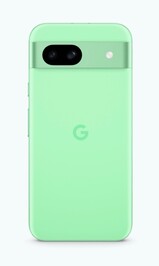
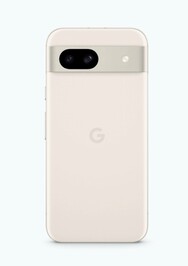
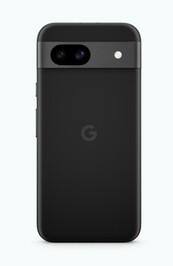
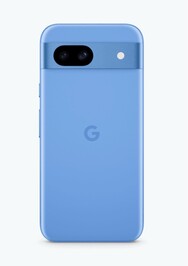











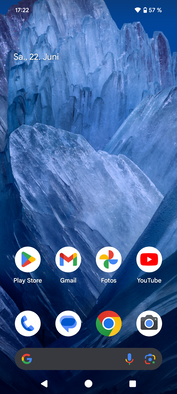

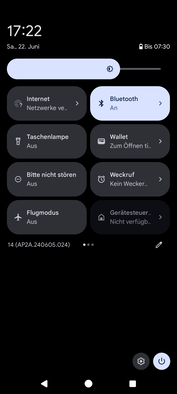
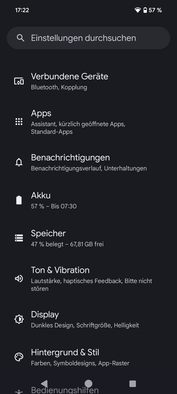
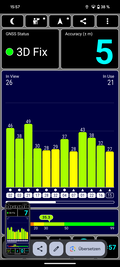
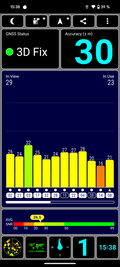

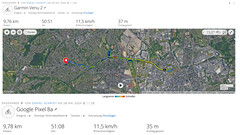
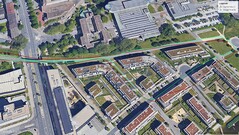
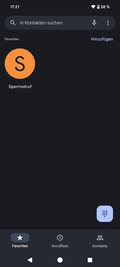
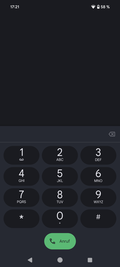







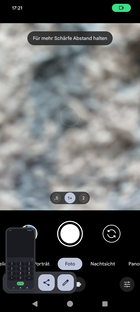
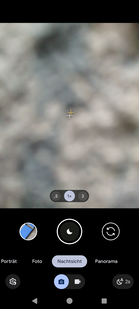
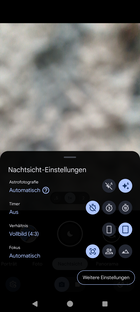
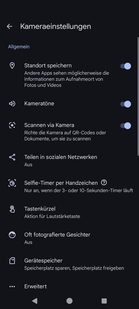
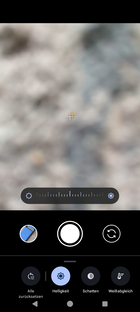

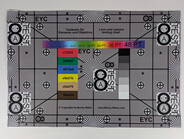








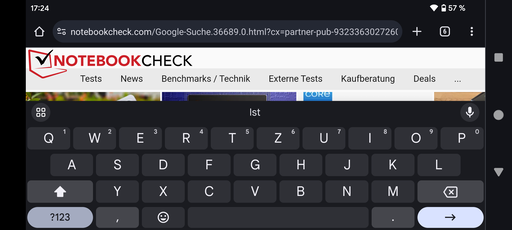

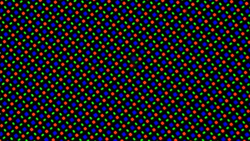
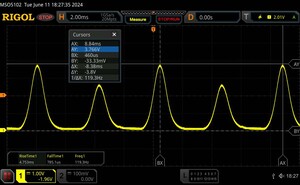





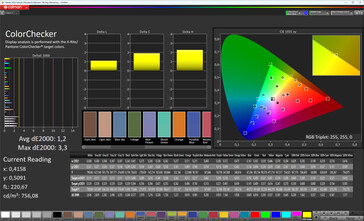
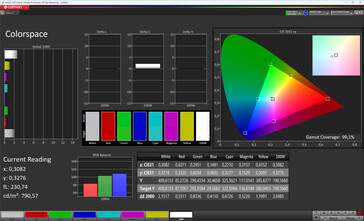
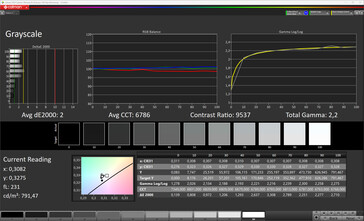
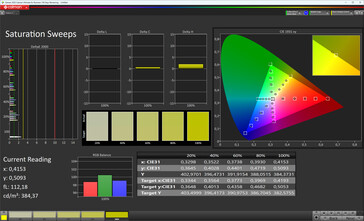

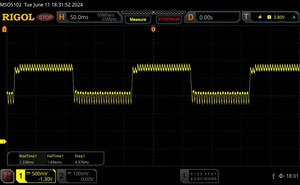
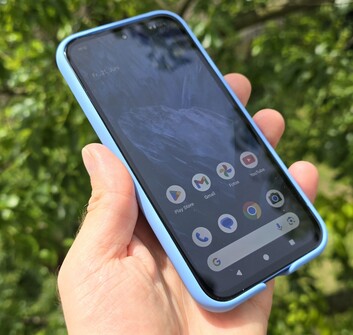


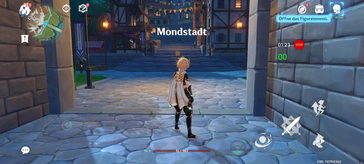
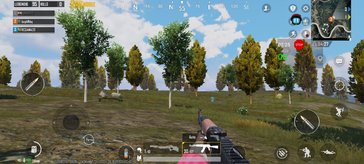
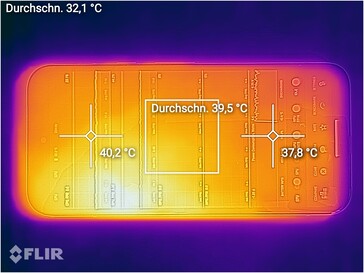
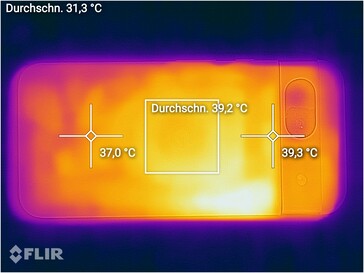
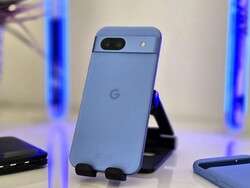
 Total Sustainability Score:
Total Sustainability Score: 
